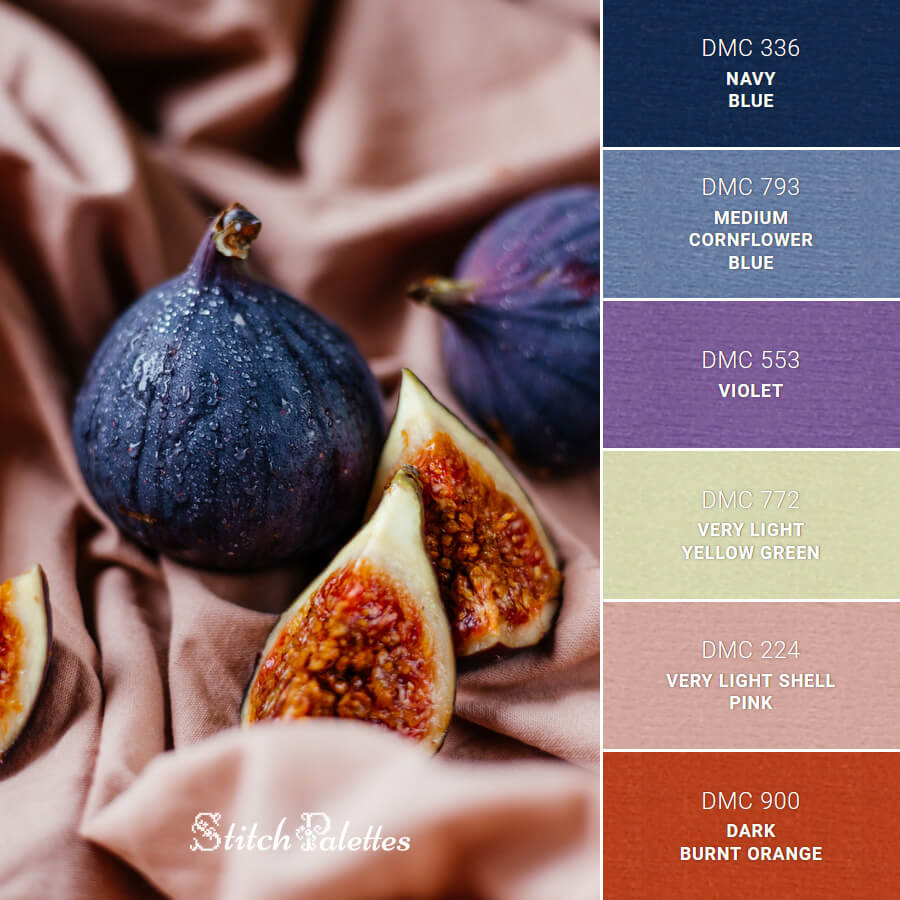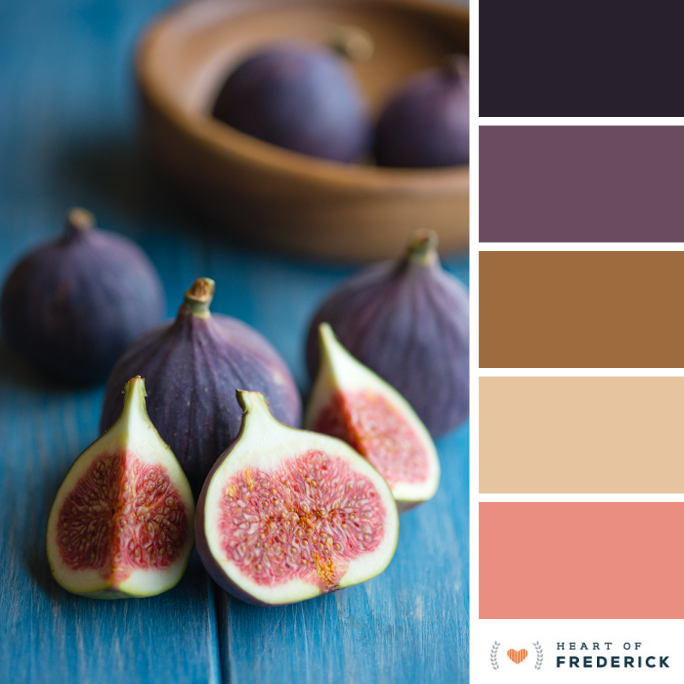The Ultimate Figs Color Code List: A Comprehensive Guide
Fig fruits come in a variety of colors, each with its unique characteristics and nutritional benefits. If you're interested in learning more about the different colors of figs and their significance, you're in the right place. This article will delve into the world of figs and their color codes, providing you with valuable insights and practical information.
Figs have been cultivated for thousands of years and are celebrated not only for their taste but also for their health benefits. Understanding the color variations of figs can help you make informed decisions when purchasing or growing them. From the deep purple hues to the vibrant green tones, each color offers distinct qualities that make figs a fascinating fruit to explore.
Whether you're a gardener, a chef, or simply a fig enthusiast, this guide will equip you with the knowledge you need to appreciate the beauty and diversity of figs. Let's dive into the world of figs and uncover the secrets behind their colorful appearances.
Read also:Courtney King Age A Comprehensive Look Into Her Life Career And Achievements
Table of Contents
- Biography of Figs
- Figs Color Code List
- Nutritional Benefits of Different Colored Figs
- Tips for Growing Figs with Specific Colors
- Culinary Uses of Colored Figs
- Common Fig Varieties and Their Color Codes
- Health Impact of Different Figs Colors
- Seasonal Availability of Colored Figs
- Market Trends in Figs Color Preferences
- Conclusion
Biography of Figs
Origin and History
Figs are one of the oldest cultivated fruits in the world, with their origins traced back to the Middle East and Western Asia. Archaeological evidence suggests that figs were cultivated as early as 5,000 BCE. Over time, fig cultivation spread across the Mediterranean region, where the fruit became an integral part of local diets and cultures.
Key Characteristics
Figs are unique in their structure and growth patterns. They belong to the Moraceae family and are classified as a type of flowering plant. The fruit itself is technically an inverted flower, which explains its soft and sweet interior. Figs can vary in size, shape, and color, depending on the variety and growing conditions.
Fig Varieties Table
| Variety | Color | Flavor | Best Season |
|---|---|---|---|
| Black Mission | Purple-black | Sweet and rich | Summer to Fall |
| Kadota | Green | Honey-like | Summer |
| Brown Turkey | Brown | Mild and sweet | Summer to Fall |
| Calimyrna | Golden | Nutty and sweet | Summer |
Figs Color Code List
Figs come in a wide range of colors, each with its own significance and appeal. Below is a comprehensive list of fig color codes that you can refer to when identifying different fig varieties.
Purple Figs
Purple figs are perhaps the most iconic variety, known for their deep, rich hues. Varieties such as Black Mission and Adriatic figs fall into this category. These figs are often associated with luxury and indulgence due to their intense sweetness and velvety texture.
Green Figs
Green figs, such as Kadota and Desert King, are prized for their mild and honey-like flavors. Their vibrant green color makes them stand out in salads and desserts, adding a refreshing touch to any dish.
Brown Figs
Brown figs, like the Brown Turkey variety, are versatile and easy to grow. They have a moderate sweetness and a firm texture, making them ideal for both fresh consumption and cooking.
Read also:Zach Templar Age Unveiling The Life Career And Contributions Of A Remarkable Figure
Nutritional Benefits of Different Colored Figs
The nutritional profile of figs varies depending on their color. Here are some key benefits associated with different colored figs:
- Purple Figs: Rich in antioxidants and flavonoids, purple figs are excellent for boosting heart health and reducing inflammation.
- Green Figs: High in fiber and potassium, green figs support digestive health and help regulate blood pressure.
- Brown Figs: Packed with calcium and magnesium, brown figs are beneficial for bone health and muscle function.
Tips for Growing Figs with Specific Colors
If you're interested in growing figs, here are some tips to help you cultivate specific colored varieties:
Choosing the Right Variety
Select a fig variety that matches your climate and soil conditions. For example, Black Mission figs thrive in warm, Mediterranean-like climates, while Brown Turkey figs are more adaptable to cooler regions.
Optimal Growing Conditions
Figs require plenty of sunlight, well-drained soil, and regular watering. Ensure your fig trees receive at least 6-8 hours of direct sunlight daily for optimal growth and fruit production.
Culinary Uses of Colored Figs
Figs are incredibly versatile in the kitchen, and their color can influence how they are used in recipes. Here are some culinary ideas for different colored figs:
- Purple Figs: Perfect for making jams, tarts, and desserts due to their intense sweetness.
- Green Figs: Ideal for salads, salsas, and savory dishes, where their mild flavor shines.
- Brown Figs: Great for roasting or grilling, as their firm texture holds up well under heat.
Common Fig Varieties and Their Color Codes
Here is a breakdown of some common fig varieties and their associated color codes:
Black Mission
Color: Purple-black
Flavor: Sweet and rich
Kadota
Color: Green
Flavor: Honey-like
Brown Turkey
Color: Brown
Flavor: Mild and sweet
Calimyrna
Color: Golden
Flavor: Nutty and sweet
Health Impact of Different Figs Colors
The health benefits of figs extend beyond their nutritional content. Different colored figs can have varying impacts on your overall well-being:
- Purple Figs: Known for their anti-inflammatory properties, purple figs can help reduce the risk of chronic diseases.
- Green Figs: High in dietary fiber, green figs promote healthy digestion and prevent constipation.
- Brown Figs: Rich in essential minerals, brown figs support bone density and muscle strength.
Seasonal Availability of Colored Figs
The availability of colored figs depends on the season and region. Here's a guide to when you can expect to find different colored figs:
- Summer: Green and golden figs are at their peak during the summer months.
- Summer to Fall: Purple and brown figs are harvested later in the season, offering a longer window of availability.
Market Trends in Figs Color Preferences
Consumer preferences for fig colors are evolving, driven by factors such as health consciousness and culinary innovation. Recent market trends indicate a growing demand for purple figs due to their high antioxidant content and visual appeal in desserts. Green figs are gaining popularity in health-conscious circles, while brown figs remain a staple in traditional recipes.
Conclusion
In conclusion, the world of figs is rich and diverse, with each color offering unique characteristics and benefits. From the deep purple hues of Black Mission figs to the vibrant green tones of Kadota figs, there's a fig variety to suit every taste and occasion. By understanding the color codes and properties of different figs, you can make informed choices that enhance both your culinary experiences and overall health.
We invite you to explore the fascinating world of figs further and share your thoughts in the comments below. Don't forget to check out our other articles for more insights into the world of fruits and their nutritional wonders. Happy reading, and happy figging!



